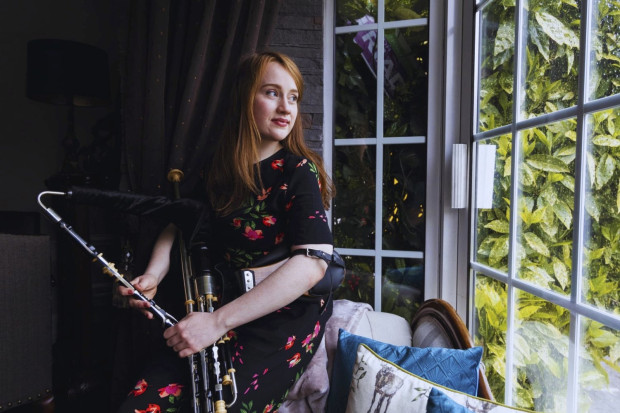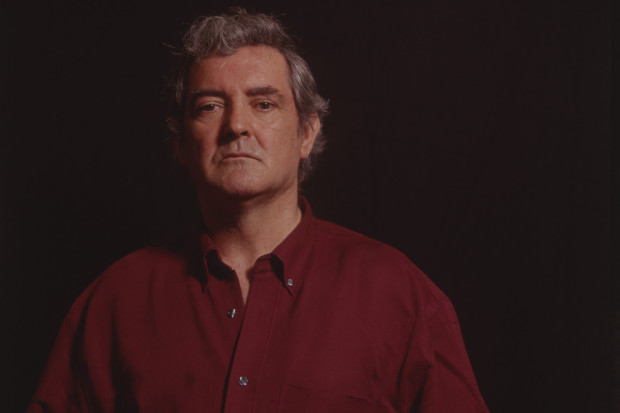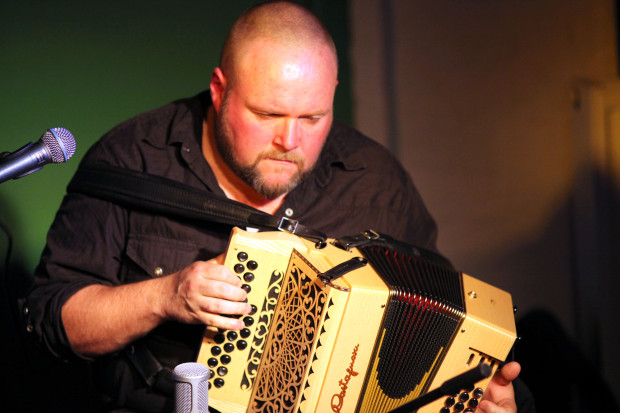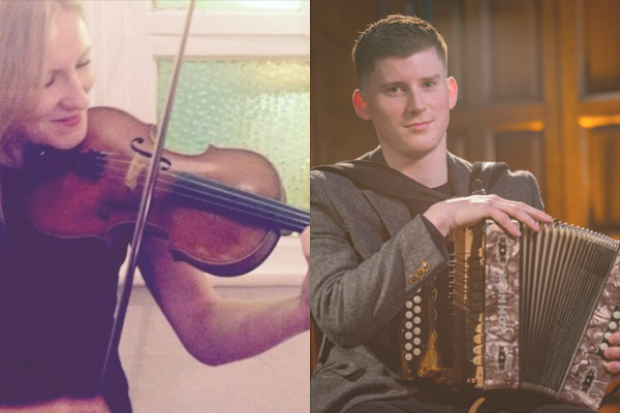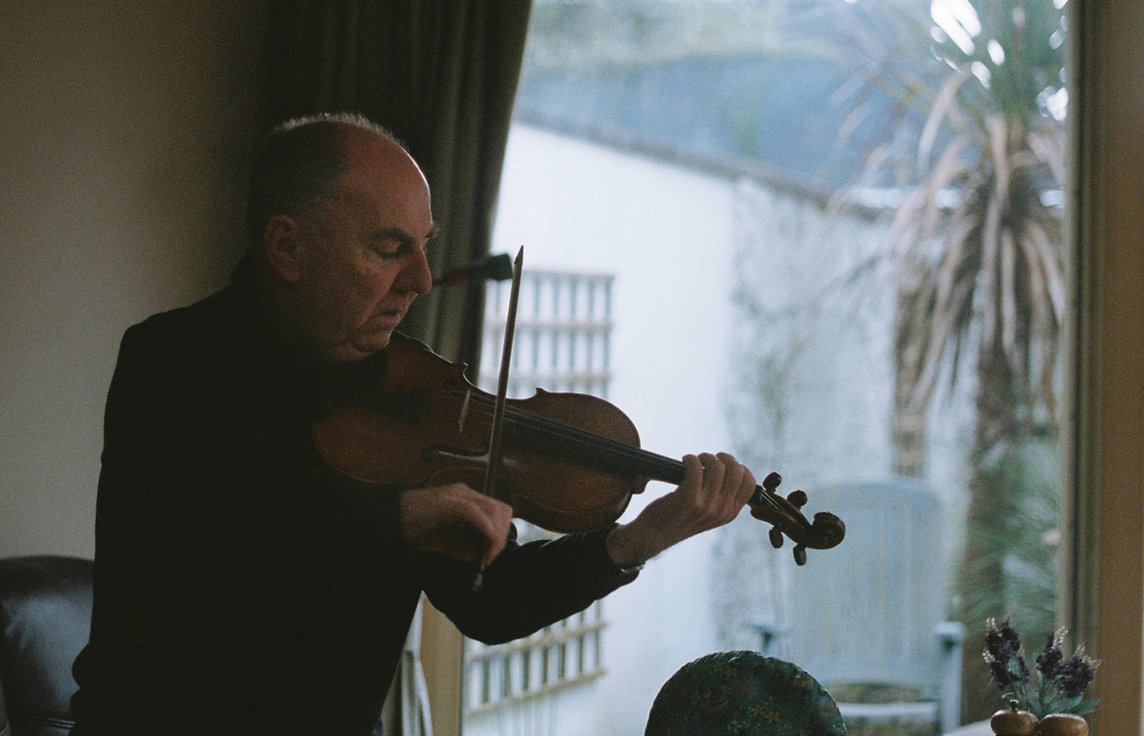
Tony Linnane (Photo: Maurice Gunning)
Continuing the Flow and Subtlety of the Clare Fiddle Tradition
The Clare fiddler Tony Linnane might be best known to many for an album made with Noel Hill back in 1979, which is as close to a canonical traditional recording as there is: any musician of my vintage (and indeed those both younger and older) will instantly react to tunes like ‘The Humours of Ballyconnell’, as indeed happened back in 2010 when they appeared together at the Temple Bar Trad festival. While Linnane has over the years performed regularly at festivals throughout the country, and recorded a number of tracks with various musicians, this is his first full recording since the 1970s, and his first solo album to boot. Most of the backing is done by Catherine McHugh on piano, often in tandem with Pádraig Ó Dubhghaill on guitar, while Mick Conneely also contributes some bouzouki. There is a welcome appearance on two tracks by tin whistler Mary Bergin, and Linnane is also joined on a few tracks by flute players Éamonn O’Riordan and Jim O’Connor.
The material doesn’t stray far from the core dance music repertoire, and it was a pleasure to re-encounter some real old favourites like the ‘Fairies’ Hornpipe’, ‘The Green Fields of America’ and ‘Dinny O’Brien’s’. Indeed only two tunes break away from the standard and reliable fare of jigs, reels and hornpipes: a dark-hued version of the set dance ‘The Ace and Deuce of Piping’ on viola, and ‘The Doon Highland’, which begins one of the fine duets with Éamonn O’Riordan. The second of these features the only ‘new’ composition on the album (which is something of a rarity these days), ‘Grist for the Mill’, a reel by the Monaghan guitarist Michael McCague. The combination here of flute and viola is novel and effective, with both players’ flowing ornamentation and varied phrasing contributing to a set with great lift and rhythm.
Classic Clare
This is an album where the goal is not necessarily to show or draw attention to any particular ostentatious technique or flamboyant approach, nor to push or improve ‘the tradition’ or ‘Irish music’. This is not meant as a negative, but in the sense that as Linnane has had decades of music-making among the highest calibre of traditional players in Clare (and beyond), there is a maturity and a stability in the music that represents something of the core of the artform. Linnane’s stylistic approach also constantly draws from the riches of Clare fiddling in particular. In the opening set of reels, the ‘Fisherman’s Lilt’ is a great example of how his playing is anchored in the finger ornamentation archetypal of the Clare style, its rolls, cuts and triplets integral to its fluidity and lift. The following ‘Chicago Reel’, an old stalwart, is full of the subtle shifts in intonation so prevalent among the classic generation of Clare fiddlers (many of whom can be heard through the phenomenal Clare County Library collection). However, the inflections in the fiddle mean that the piano isn’t the most natural accompaniment – particularly the digital type played here. Another great example of the depth of artistry in Linnane’s fiddle playing can be heard in ‘The Bunch of Green Rushes’. Close listening reveals how careful the structure of the phrasing is: there are moments for lift midway through bar three in the first part; in contrast, the second part flows throughout the whole eight bars; the point of lift then moves in the third part to the long note in bar four, with the double-stop allowed to bloom underneath the continuing phrase.
At the same time, Linnane’s laconic sleeve notes illustrate how musicians and fiddle players from elsewhere have contributed to his music – as Gearóid Ó hAllmhuráin noted in Flowing Tides, many cultural flows have left an imprint on the music of the region. The recordings of the great Michael Coleman are mentioned, as is the fiddler Brendan McGlinchey, the piper Séamus Ennis, and the flute player Roger Sherlock. A key direct influence was the Donegal fiddler Tommy Peoples, who had moved to Clare during the 1970s, and tunes from his repertoire here include the reels ‘Mrs Lyons’ and ‘The New Policeman’. Linnane’s fiddle and Mary Bergin’s tin whistle combine to produce a lovely lightness and brightness on this set, complimented by the expert bouzouki of Conneely, which channels the sound of Alec Finn in its clever use of hammer-ons and idiosyncratic rhythms. Elsewhere Catherine McHugh and Pádraig Ó Dubhghaill provide sturdy and unobtrusive backing, complementing the lift and flow of the music, although the stock technique of adding the guitar to the piano mid-set becomes somewhat predictable.
Linnane’s playing on this fine album brought to mind the words of Giraldus Cambrensis, the twelfth-century Welsh cleric who commented on the Irish music of the time, particularly that of the harp: ‘the perfection of their art seems to lie in their concealing it, as if it were better for being hidden’ (Alan Fletcher, Drama and the Performing Arts in Pre-Cromwellian Ireland). While subtle and with understated prowess, the rhythmic vitality and drive that comes from the dance is always to the fore, and makes this album a fine addition to the continuing history and flow of Clare traditional fiddling.
Ceol na Fidle by Tony Linnane is available on Raelach Records. Visit https://raelachrecords.bandcamp.com/album/ceol-na-fidle
Subscribe to our newsletter.
Click on the image below to listen.
Published on 24 August 2023
Adrian Scahill is a lecturer in traditional music at Maynooth University.










